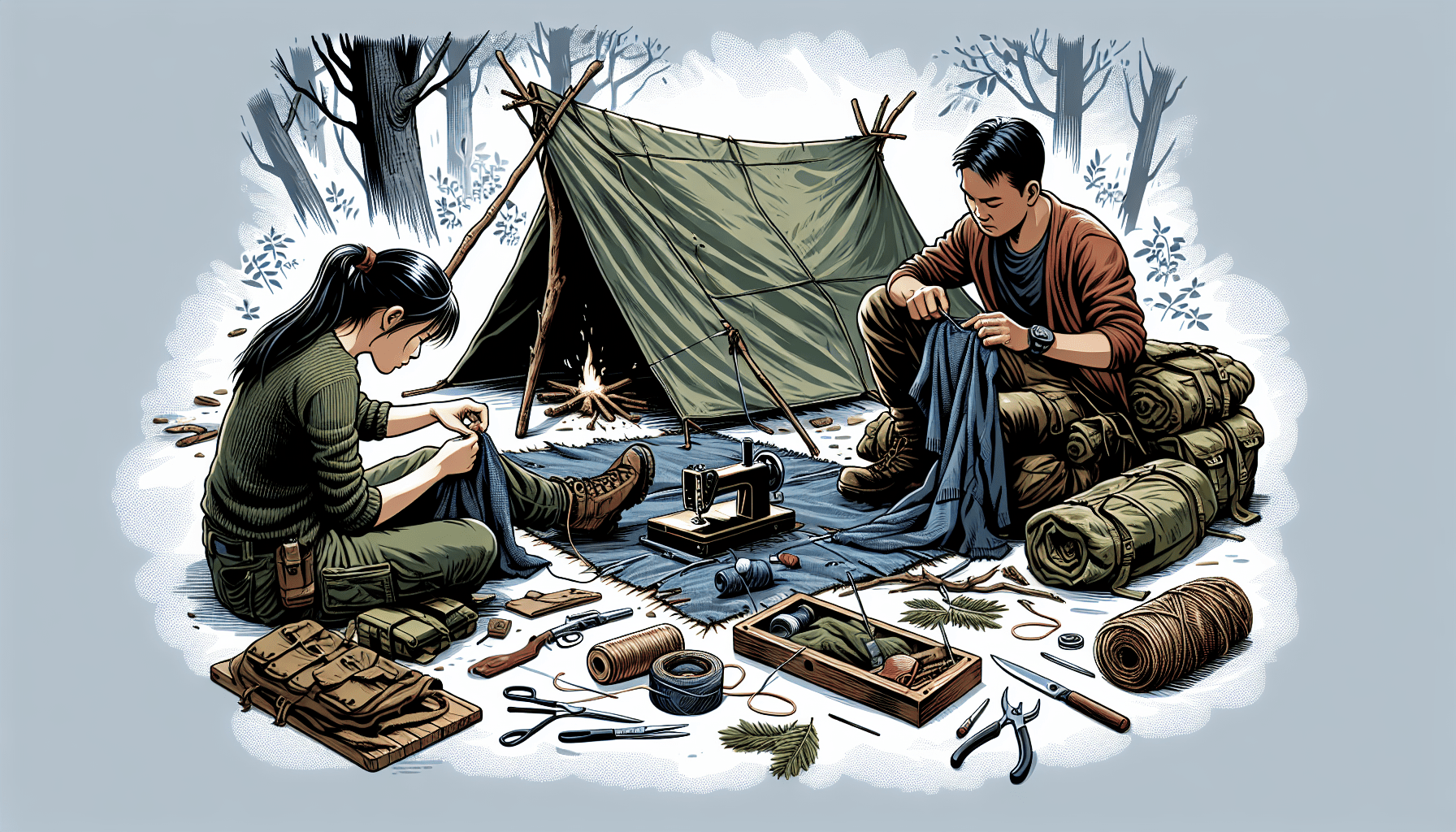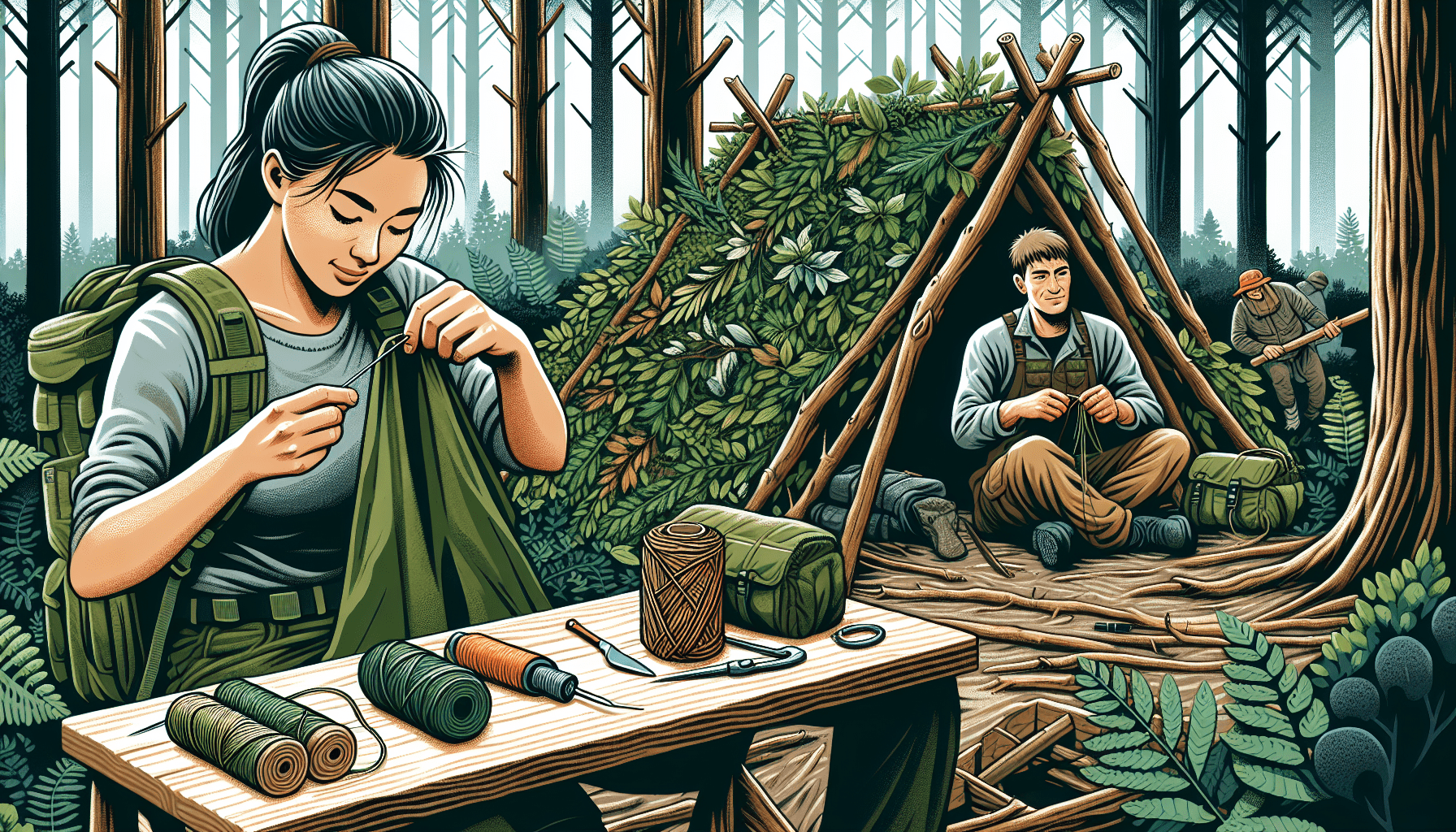Are you prepared for any emergency situation that may come your way? In today’s unpredictable world, being equipped with the essential skills for prepper clothing and shelter is crucial. Whether you’re a seasoned survivalist or just starting your journey, this article will provide you with valuable insights and tips on how to effectively prepare for any disaster or crisis. From choosing the right clothing materials to constructing a reliable shelter, you’ll gain the knowledge and confidence needed to stay safe and secure in any circumstance. So, let’s dive into the world of prepper clothing and shelter and ensure you’re always ready for whatever comes your way.
Clothing
When it comes to prepping and being prepared for any situation, one of the most important aspects is having the right clothing. Whether you’re facing extreme weather conditions or unexpected emergencies, your clothing can make a world of difference. Let’s explore some essential skills for prepper clothing and shelter to ensure you are well-equipped and ready for anything that comes your way.
Warmth
Staying warm is crucial in any survival situation. Having proper insulation and clothing layers can help regulate your body temperature and prevent hypothermia. Make sure to include items like thermal base layers, fleece jackets, and insulated pants in your prepper clothing arsenal. These will provide you with the warmth and comfort you need when the temperatures drop.
Durability
Your clothing should be able to withstand the elements and rough conditions. Look for durable materials like nylon or ripstop fabric that can handle wear and tear. Reinforced stitching and double-layered knees and elbows are also important features to consider. By investing in durable clothing, you can ensure that it will last longer and be ready for any tough situation.
Versatility
In a survival scenario, versatility is key. Your clothing should be able to adapt to different weather conditions and situations. Look for items that can easily be layered or adjusted to accommodate changes in temperature. Convertible pants, zip-off sleeves, and jackets with removable liners are great options for versatile prepper clothing. This way, you can adapt your outfit to any situation that arises.
Layering
Layering is an effective technique for regulating body temperature and adapting to changing weather conditions. The key to effective layering is to have a base layer, insulation layer, and an outer shell. The base layer should wick away moisture from your skin, the insulation layer provides warmth, and the outer shell protects you from wind and rain. This layering system allows you to add or remove clothing layers depending on the temperature and your activity level.
Moisture-wicking
Moisture-wicking fabrics are essential to keep your body dry, especially during physical activities or in hot and humid conditions. These fabrics draw moisture away from your skin, so you stay comfortable and avoid chafing or irritation. Look for clothing made from materials like merino wool or synthetic fibers with moisture-wicking properties. By staying dry, you can prevent hypothermia and other complications in challenging situations.
Waterproofing
Having waterproof clothing is vital to protect yourself from rain, snow, or any other wet conditions. Look for rain jackets and pants made with waterproof materials like Gore-Tex or similar membranes. These fabrics offer excellent water resistance while allowing moisture to escape, keeping you dry and comfortable. Remember to also consider waterproof accessories like gloves and hats to complete your prepper clothing setup.
Camouflage
In certain situations, staying hidden and blending into your surroundings may be crucial for your safety. Consider including camouflage clothing or accessories in your prepper gear. Camouflage patterns can help you remain undetected and increase your chances of survival, especially if you’re hunting or trying to avoid potential threats. Choose clothing that matches the environment you are likely to encounter to maximize its effectiveness.
Protection from Insects
Insects and other small critters can be a nuisance and even transmit diseases. To protect yourself, incorporate clothing that offers insect resistance into your prepper wardrobe. Look for clothing that is treated with insect repellent, or choose garments made of tightly woven fabrics that create a physical barrier against insects. Additionally, consider wearing long-sleeved shirts, pants, and socks to minimize exposed skin and reduce the risk of insect bites.
Sun Protection
Whether you’re in the wilderness or facing a survival situation, protecting yourself from the sun’s harmful rays is crucial. Sun exposure can cause painful sunburns and long-term damage to your skin. Invest in wide-brimmed hats, lightweight long-sleeved shirts, and pants with UPF (ultraviolet protection factor) ratings to shield your skin from harmful UV rays. Don’t forget to wear sunscreen on exposed areas and bring sunglasses to protect your eyes.
Storage and Portability
Lastly, when it comes to prepper clothing, consider the storage and portability aspects. Your clothing should be lightweight, compact, and easy to pack in your bug-out bag or any other storage container. Look for clothing that can be folded or rolled up tightly without losing its shape. Consider multi-purpose items like bandanas, which can serve multiple functions like headwear, dust masks, or even makeshift slings.

Shelter
In addition to clothing, having adequate shelter is crucial for survival in emergency situations. Whether you’re camping, facing extreme weather conditions, or seeking refuge, your shelter should provide protection, comfort, privacy, and be easy to set up. Let’s explore the essential skills for prepper shelter that you should master.
Emergency Shelter Options
Having various emergency shelter options in your prepper toolkit is essential. Consider investing in lightweight options like tarps, tents, or emergency bivvy bags. Tarps are versatile and can be used in multiple ways, such as providing shade, creating a shelter with trees, or acting as a ground cover. Tents offer more protection and privacy, while emergency bivvy bags are compact and useful for surviving unexpected situations.
Insulation
Insulation is key to staying warm and comfortable in your shelter. Proper insulation traps your body heat and prevents it from escaping, keeping you warm even in cold weather. Consider using insulating materials such as emergency blankets, sleeping bags, or foam sleeping pads. These items provide an extra layer between you and the ground, minimizing heat loss and ensuring a more restful sleep.
Stability and Sturdiness
When selecting a shelter, prioritize stability and sturdiness. Your shelter should be able to withstand strong winds, heavy rain, or even snowfall. Look for tents or tarps with reinforced seams, sturdy poles, and guy lines to secure them firmly to the ground. Keep in mind that a stable shelter not only protects you from the elements but also provides a sense of security and peace of mind.
Waterproofing
Ensuring your shelter is waterproof is vital, especially in wet climates or during heavy rainfall. Look for shelters made from waterproof materials, with taped seams or a rainfly to keep you dry. Apply seam sealer if necessary to prevent water from leaking through the seams. Additionally, invest in waterproof ground tarps or footprint to keep the moisture away from your sleeping area.
Lightweight
Opting for lightweight shelter options is essential for mobility and portability. When bugging out or moving from one location to another, a heavy and cumbersome shelter can slow you down. Look for lightweight tents or tarps made from durable materials, such as silnylon or polyester, which offer strength without unnecessary weight. Keep a balance between weight and durability to ensure your shelter can withstand the demands of survival scenarios.
Easy Setup and Takedown
During emergency situations, time is of the essence. Your shelter should be quick and easy to set up and pack away when needed. Familiarize yourself with your shelter’s assembly instructions and practice setting it up before an actual emergency occurs. Look for shelters that feature color-coded poles or intuitive designs, enabling you to assemble them quickly, even in stressful situations or low-light conditions.
Versatility
A versatile shelter is one that can adapt to various situations and terrain. Consider choosing a shelter that allows you to modify its setup, such as using trekking poles or natural structures as additional supports. This flexibility ensures you can erect your shelter even if you don’t have all the necessary components. A versatile shelter will increase your chances of finding a safe and comfortable spot to sleep in any environment.
Protection from Insects
Similar to your clothing, your shelter should protect you from insects and crawling creatures. Ensure that your shelter has insect screens or mesh openings to keep insects out while still allowing for proper ventilation. If your shelter does not have built-in insect protection, consider using mosquito nets or bug repellent sprays inside your sleeping area to avoid pesky encounters during the night.
Wind Resistance
Wind can be a significant challenge for your shelter’s stability and comfort. Look for shelters with aerodynamic designs or features like sturdy cross-bracing, multiple guy lines, or tensioners to increase wind resistance. Position your shelter in a location that provides natural windbreaks, like trees or bushes, to further protect it from strong gusts. By making your shelter wind-resistant, you can avoid potential damage or collapse during severe weather conditions.
Privacy
Privacy is often overlooked but essential for mental well-being in survival situations. Your shelter should provide you with a sense of seclusion and security, away from prying eyes or potential threats. Look for shelters with opaque materials or those that can be fully enclosed. You can also create privacy with the strategic placement of tarps or natural vegetation. Having a space where you can feel safe and unobserved can greatly contribute to your overall comfort and peace of mind.
By mastering the essential skills for prepper clothing and shelter, you can be better prepared for emergencies and survival scenarios. Remember to choose clothing that offers warmth, durability, versatility, and protection from the elements, insects, and the sun. Your shelter should be easy to set up, offer insulation, be waterproof, and provide stability, privacy, and protection. With the right clothing and shelter in your prepper gear, you can face any challenge that comes your way with confidence and peace of mind.

